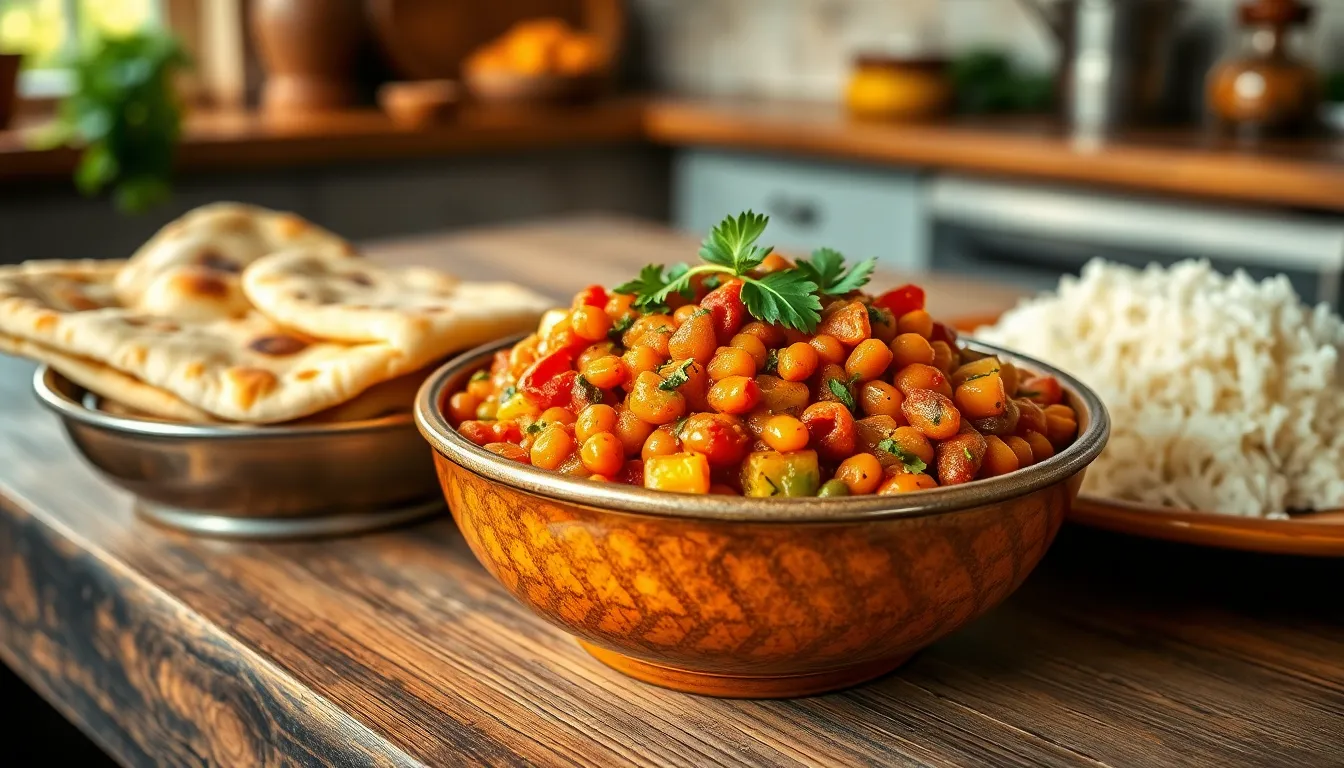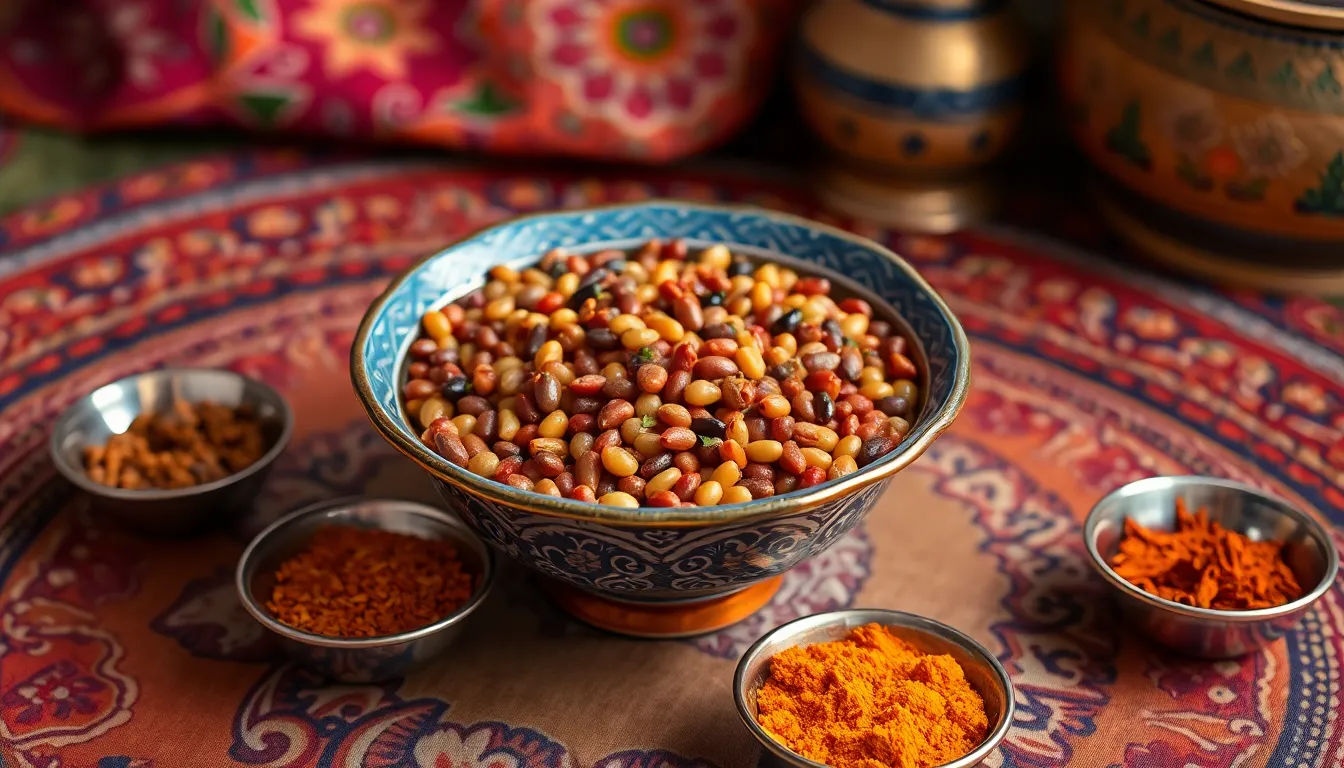Table of Contents
ToggleIn the vibrant world of traditional Indian cuisine, few dishes spark curiosity quite like jharaahar. This lesser-known gem combines a medley of spices, textures, and flavors that can make even the most discerning foodies sit up and take notice. If your taste buds are ready for an adventure, jharaahar is about to become your new best friend.
Overview of Jharaahar
Jharaahar represents an intriguing aspect of traditional Indian cuisine. This dish showcases a blend of spices that create a bold, distinctive flavor profile. Ingredients commonly include lentils, vegetables, and various spices, which contribute to its rich taste.
Cooking jharaahar involves simmering the ingredients until they reach a perfect consistency. Each component complements the others, leading to a harmonious dish. Enthusiasts often describe jharaahar as a balance of spicy and savory notes, appealing to those who enjoy complex flavors.
Origins trace back to specific regions in India, where local variations exist. Popular ingredients can differ based on regional availability and culinary traditions. One might find variations that include regional herbs or spices, enhancing the overall appeal.
Culinary techniques play a crucial role in preparing jharaahar. For instance, toasting spices before incorporation intensifies their flavor. This method distinguishes jharaahar, allowing it to stand out among other dishes.
Serving jharaahar typically occurs alongside rice or flatbreads, further enriching the dining experience. Family gatherings often feature this dish, highlighting its status as a comforting meal. Loved for its nourishing qualities, jharaahar can be a staple in many households.
Overall, jharaahar offers a delightful journey through Indian flavors. Its unique preparation and wide-ranging ingredients make it a dish worth exploring for any food lover. Through its combination of textures and tastes, jharaahar captures the essence of traditional Indian cooking.
Historical Significance
Jharaahar holds a unique place in the tapestry of traditional Indian cuisine. Its historical roots run deep, reflecting the diverse culinary landscape of India.
Ancient Origins
Ancient texts often mention dishes similar to jharaahar, showcasing its longstanding presence in India. Varieties of lentils and spices have been staples in Indian diets for centuries, with jharaahar embodying this heritage. Recipes likely evolved through regional influences, adapting to the local availability of ingredients. Evidence suggests that cooking techniques, such as slow simmering, were practiced in homes across India, enhancing the dish’s depth of flavor.
Cultural Impacts
Culturally, jharaahar transcends mere sustenance, symbolizing community and tradition. Meals featuring this dish often bring families together, especially during festivals and special occasions. Numerous regional variations exist, each telling a unique story through their ingredients and preparation methods. Jharaahar reflects the essence of Indian hospitality, serving as a comforting dish for guests. The dish’s popularity continues to grow, with modern adaptations appearing on restaurant menus, showcasing its enduring relevance in contemporary cuisine.
Characteristics of Jharaahar
Jharaahar showcases distinct features that reflect its rich culinary heritage.
Physical Features
Jharaahar typically presents a colorful appearance, accentuated by vibrant vegetables and spices. It often has a thick, hearty consistency, achieved by simmering the ingredients until they meld together. The dish usually resembles a stew, with grains or lentils providing a base. Textures vary from tender vegetables to soft beans, each adding depth. Aroma from toasted spices permeates the dish, enticing those nearby. Its unique combination of colors and textures offers an appealing visual that complements its complex flavors.
Varieties and Types
Numerous varieties of jharaahar exist across different regions, each with local twists. Some versions include additional proteins such as chicken or fish, enhancing flavor and nutritional value. Vegetarian options often contain an assortment of seasonal vegetables, which change according to availability. Regional spices differ, affecting taste and heat levels. Popular variations include spicy jharaahar from the South or milder adaptations from the North. Each type reflects the local culture and ingredient preferences, showcasing the versatility of this traditional dish.
Uses of Jharaahar
Jharaahar serves multiple functions in both culinary and health contexts. Its rich flavors and nourishing qualities make it a staple in many dishes.
Culinary Applications
Cooks often use jharaahar as a versatile base due to its thick consistency and vibrant taste. The dish pairs well with various staples like rice or flatbreads, enhancing meals with depth. Chefs customize variations, adding seasonal vegetables or proteins such as chicken or fish. Furthermore, its complex spice blend elevates the flavor profile of any meal. Restaurants embrace jharaahar as a signature dish, showcasing its adaptability in modern cuisine. This dish also appears at family gatherings, emphasizing comfort and togetherness through shared meals.
Medicinal Properties
Jharaahar possesses several health benefits attributed to its ingredients. Rich in lentils, the dish provides essential proteins and dietary fiber. Spices used in jharaahar, such as turmeric and cumin, contribute antioxidant properties and aid digestion. Many cultures believe that the hearty composition supports immune function, helping to combat common ailments. Furthermore, the dish often includes vegetables, offering vitamins and minerals vital for overall health. As a result, incorporating jharaahar into a balanced diet promotes both well-being and a connection to traditional culinary practices.
Modern Relevance
Jharaahar remains a significant dish in contemporary culinary conversations. Its unique flavor profile continues to resonate with food enthusiasts and chefs alike.
Current Trends
With the rise of plant-based diets, jharaahar has gained popularity. Many restaurants now feature innovative takes on this dish, using local and organic ingredients. Chefs across various regions reinterpret jharaahar, adding modern twists while preserving its core essence. Fusion variations increasingly highlight the dish’s adaptability, appealing to diverse palates. Food bloggers frequently showcase jharaahar, contributing to its online visibility and encouraging home cooks to explore traditional recipes.
Conservation Efforts
Preserving the authenticity of jharaahar becomes essential in a rapidly changing food landscape. Several organizations work to promote traditional cooking methods, ensuring jharaahar’s recipes persist. Community initiatives emphasize the importance of regional ingredients, fostering appreciation for local farmers. Sustainable practices gain traction, helping to protect these cherished culinary traditions. Cooking classes often feature jharaahar, engaging younger generations in its preparation and significance. The potential for jharaahar to bridge cultural gaps and promote dietary health remains a compelling aspect of its preservation.
Conclusion
Jharaahar stands as a testament to the rich tapestry of traditional Indian cuisine. Its unique blend of spices and nourishing ingredients not only satisfies the palate but also fosters a sense of community and cultural heritage. As food enthusiasts continue to embrace this dish, its adaptability to modern dietary preferences highlights its relevance in today’s culinary landscape.
By exploring jharaahar, individuals can experience a flavorful journey that connects them to age-old traditions while enjoying the health benefits it offers. This dish invites everyone to discover the depth of Indian flavors and the joy of sharing meals with loved ones.








